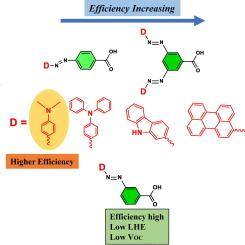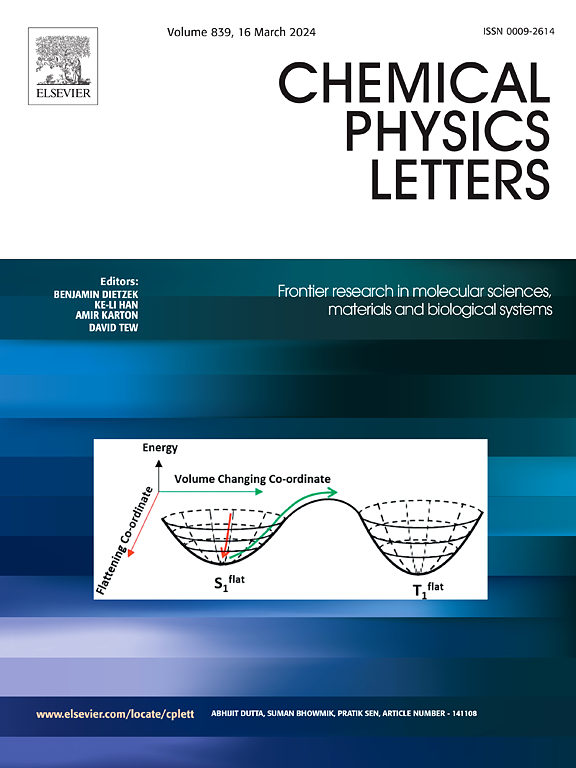以偶氮基为π间隔剂的双给体能否提高染料敏化太阳能电池的性能?
IF 3.1
3区 化学
Q3 CHEMISTRY, PHYSICAL
引用次数: 0
摘要
本研究对染料敏化太阳能电池(DSSCs)用的8种偶氮基染料敏化剂进行了计算分析。使用DFT和TD-DFT方法,我们评估了电子结构、光物理性质和光伏性能。与单给体染料相比,双给体染料具有更窄的HOMO-LUMO间隙、更好的电子离域和更强的分子内电荷转移。静电电位和电荷密度分析证实了电荷分离的增强。光收集效率、电子注入和染料再生能量与效率相关。其中,双给体N,N-二甲基苯胺(DM3)表现优异,理论效率为15.21%。苝基染料,尽管λmax值很高,但效率较低,突出了供体- π -受体设计的重要性。本文章由计算机程序翻译,如有差异,请以英文原文为准。

Can dual donor with an azo group as a π-spacer enhance the dye-sensitized solar cell performance?
This study presents computational analysis of eight azo-based dye sensitizers with mono- and dual-donors for dye-sensitized solar cells (DSSCs). Using DFT and TD-DFT methods, we evaluated electronic structures, photophysical properties, and photovoltaic performance. Dual-donor dyes showed narrower HOMO–LUMO gaps, better electron delocalization, and stronger intramolecular charge-transfer than mono-donor dyes. Electrostatic potential and charge density analyses confirmed enhanced charge separation. Light harvesting efficiency, electron injection, and dye regeneration energies—were correlated with efficiency. Among all, Dual-donor N,N-Dimethylaniline (DM3) exhibited superior performance with 15.21 % theoretical efficiency. Perylene-based dyes, despite high λmax values, were less efficient, highlighting donor–π–acceptor design importance.
求助全文
通过发布文献求助,成功后即可免费获取论文全文。
去求助
来源期刊

Chemical Physics Letters
化学-物理:原子、分子和化学物理
CiteScore
5.70
自引率
3.60%
发文量
798
审稿时长
33 days
期刊介绍:
Chemical Physics Letters has an open access mirror journal, Chemical Physics Letters: X, sharing the same aims and scope, editorial team, submission system and rigorous peer review.
Chemical Physics Letters publishes brief reports on molecules, interfaces, condensed phases, nanomaterials and nanostructures, polymers, biomolecular systems, and energy conversion and storage.
Criteria for publication are quality, urgency and impact. Further, experimental results reported in the journal have direct relevance for theory, and theoretical developments or non-routine computations relate directly to experiment. Manuscripts must satisfy these criteria and should not be minor extensions of previous work.
 求助内容:
求助内容: 应助结果提醒方式:
应助结果提醒方式:


